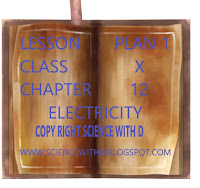MCQ CLASS 10th CHAPTER LIGHT REFLECTION AND REFRACTION
MCQ
LIGHT, REFRACTION AND REFRACTION
Q 1 If a ray of light incident normally on a plane mirror then the angle of reflection is
a) 90 degree
b) 0 degree
c) 30 degree
d) 60 degree
Q 2 No matter how far you stand from a mirror, your image appears erect. The mirror is likely to be:
a) plane mirror
b) concave mirror
c) convex mirror
d) either plane or convex
Q 3 Magnification produced by a concave mirror may be
a) less than 1 or greater than 1
b) less than 1 or equal to 1
c) greater than 1 or equal to 1
d) less than 1 or equal to 1 or greater than 1
Q 4 Magnification produced by a convex mirror may be
a) less than 1
b) equal to 1
c) greater than 1
d) less than 1 or greater than 1
Q 5 The image formed by a concave mirror is observed to be virtual, erect and larger than the object. Where should be the position of the object
a) Between the principal focus and the centre of curvature
b) At the centre of curvature
c) Beyond the centre of curvature
d) Between the pole of the mirror and its principal focus
Q 6 Rays from Sun converge at a point 10 cm in front of a concave mirror. Where should an object be placed so that size of its image is equal to the size of the object?
a) 10 cm in front of the mirror
b) 20 cm in front of the mirror
c) between 10 cm and 20 cm in front of the mirror
d) more than 2 cm in front of the mirror
Q 7 The image of a distant object is obtained on the screen by using a concave mirror. The focal length of the mirror can be determined by measuring the distance between
a) the object and the mirror
b) the object and the screen
c) the mirror and the screen
d) the mirror and the screen as well as that between screen and object
Q 8 With respect to air the refractive index of kerosene is 1.44 and that for diamond is 2.42. Calculate the refractive index of diamond with respect kerosene is
a) 0.77
b) 0.59
c) 1.68
d) None of these
Q 9 A ray of light travelling into air enters into glass obliquely
a) is refracted towards the normal
b) is refracted away from the normal
c) is not refracted
d) goes along the boundary
Q 10 A ray of light is incident normally on the surface of water. Its angle of refraction in water is
a) 90 degree
b) 0 degree
c) 180 degree
d) 45 degree
Q 11 When a ray of light passes from one medium to another, which of the following does not change?
a) wavelength
b) speed
c) intensity
d) frequency
Q 12 The point on the principal axis of a lens through which a ray of light passes without any deviation is called
a) focus
b) optical centre
c) centre of curvature
d) pole
Q 13 The magnification produced by a concave lens is
a) equal to 1
b) greater than 1
c) less than 1
d) may be 1
Q 14 A student obtained a sharp image of the grill of a window on a screen, using a convex lens. For getting better results, the teacher suggested focusing of a distant tree instead of the grill. In which direction should the lens be moved for this purpose?
a) Away from the screen
b) Very far away from the screen
c) Behind the screen
d) Towards the screen
Q 15 A magnified and erect image is obtained by a convex lens when an object is placed
a) at 2F
b) more than 2F
c) at F
d) between F and optical centre



Comments
Post a Comment